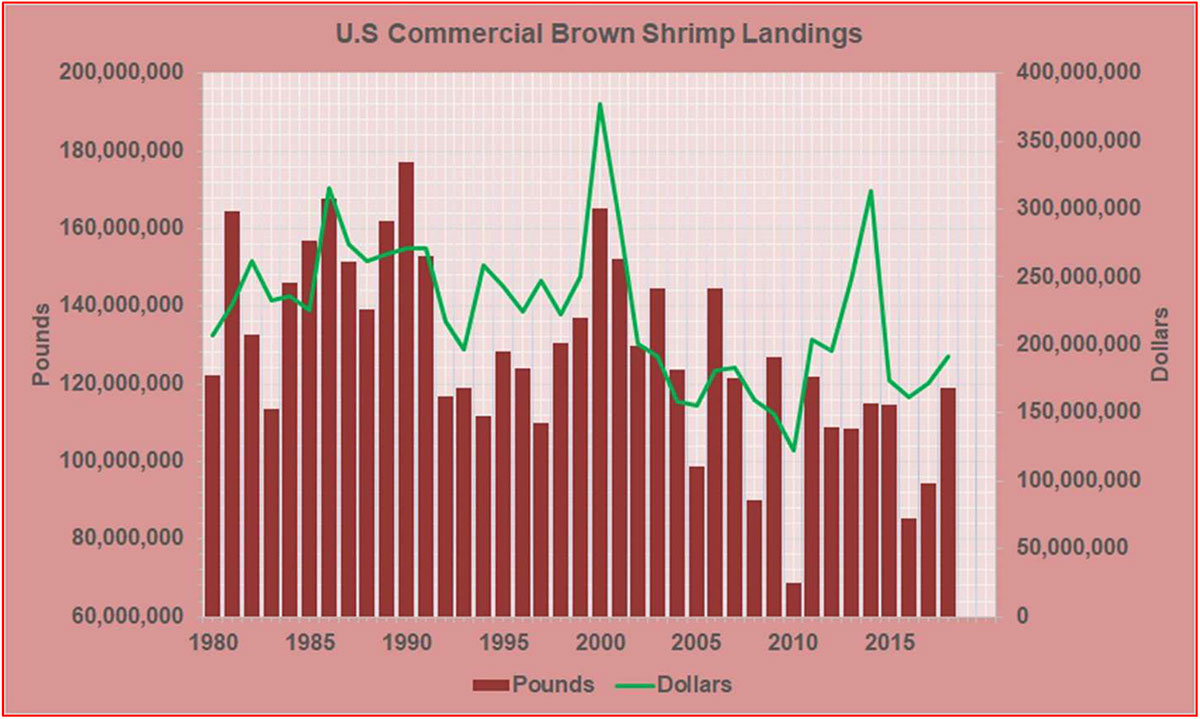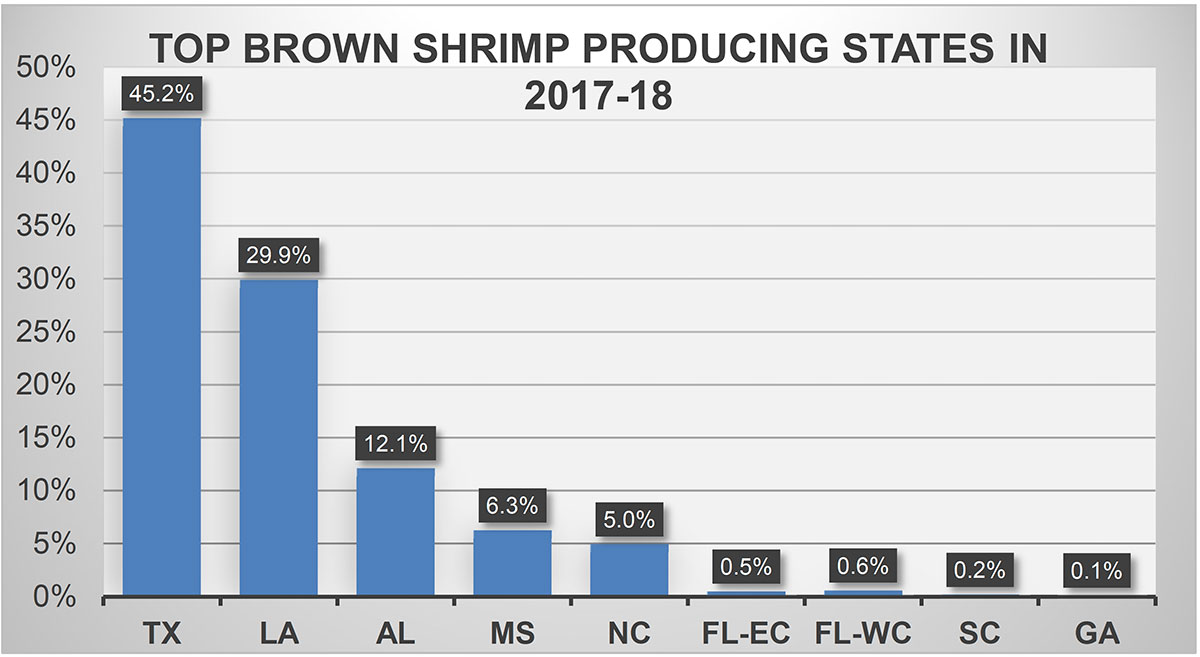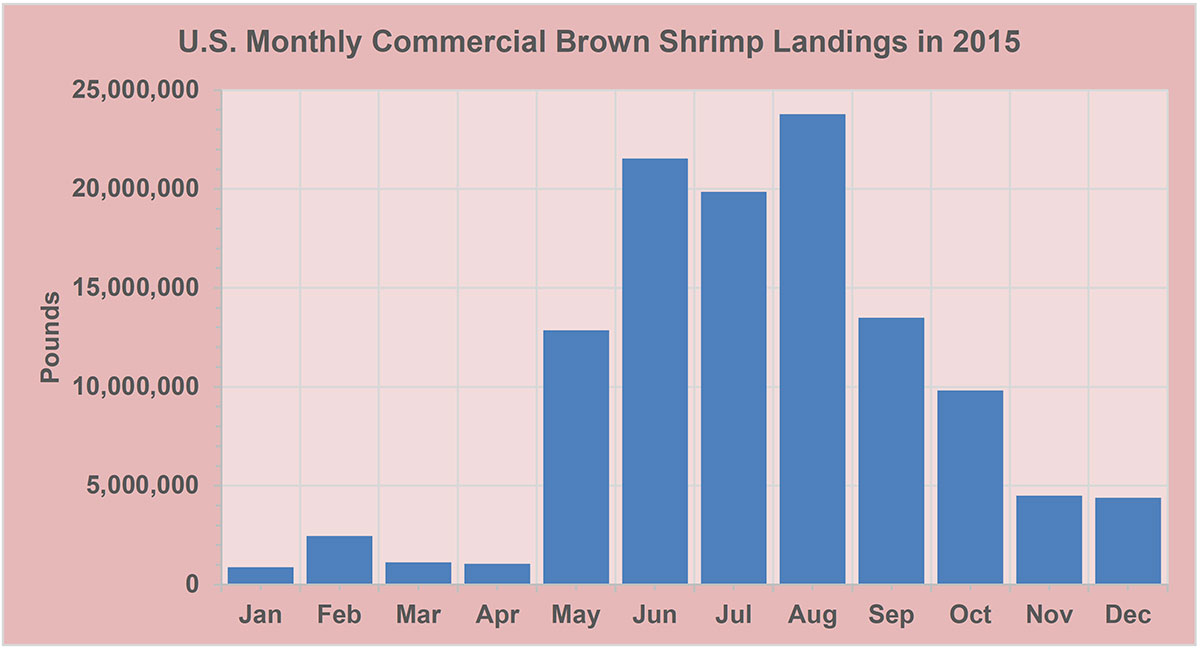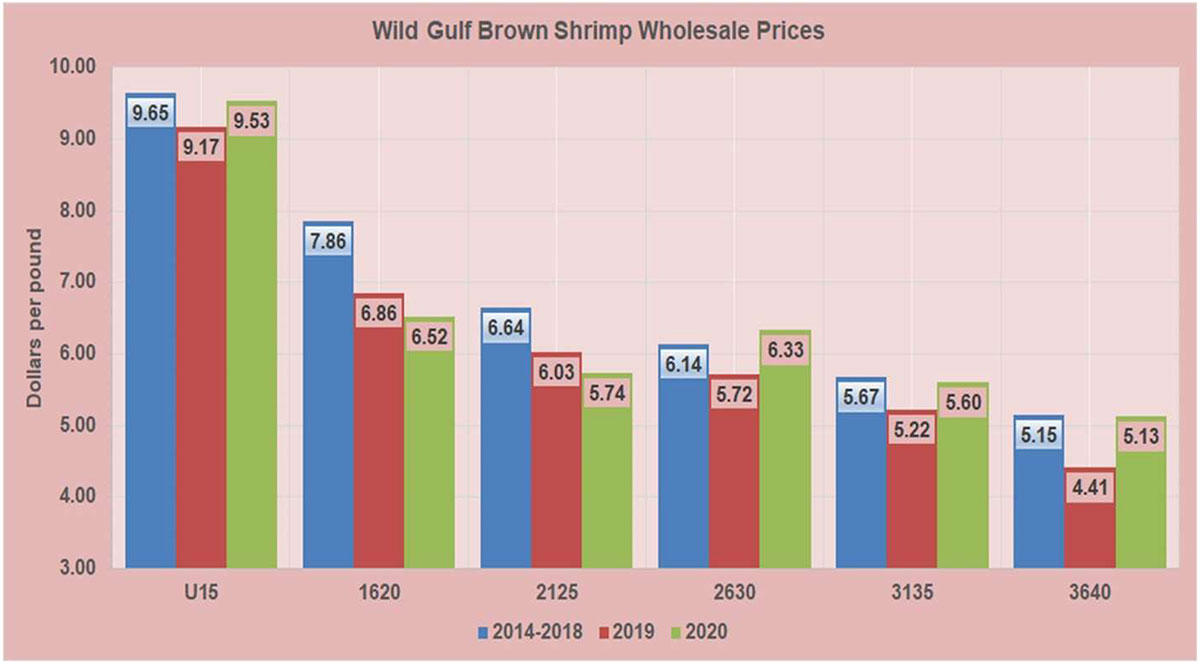Vol. 10 No. 5 / Dockside and Wholesale Prices of Brown Shrimp
Authors
Your Extension Experts
Related News
April 14, 1995
March 31, 1995
In this issue, Dr. Posadas describes the long-term trends in the landings, dockside values, and prices of the U.S. brown shrimp markets. Shrimp businesses are adversely affected by natural, technological, and human-made disasters, public health crises, and economic recessions. The long-term economic impacts of recent coastal events and public health crisis on the domestic markets of brown shrimp will take some time to assess. Instead, some benchmark data on dockside and wholesale markets during the past five years are presented.
Posadas, Benedict C. Dockside and Wholesale Prices of Brown Shrimp in the United States. Mississippi MarketMaker Newsletter, Vol. 10, No. 5. May 28, 2020. http://extension.msstate.edu/newsletters/mississippi-marketmaker.
According to NOAA Fisheries (https://www.fisheries.noaa.gov/species/brown-shrimp), “brown shrimps (Farfantepenaeus aztecus) are also known as brownies, green lake shrimp, red shrimp, redtail shrimp, golden shrimp, native shrimp, summer shrimp. U.S. wild-caught brown shrimp is a smart seafood choice because it is sustainably managed and responsibly harvested under U.S. regulations. Brown shrimps are found in the western North Atlantic from Martha’s Vineyard, Massachusetts, to the Florida Keys and along the Gulf Coast to northwestern Yucatan in Mexico. Females typically release about 500,000 to 1 million eggs near the ocean floor. Peak spawning is in spring and summer, with newly hatched shrimp entering estuaries in February and March to settle in their nursery habitat.”

The U.S. brown shrimp fishery is a precious marine resource providing a total of almost nine billion dollars of direct economic contribution to the economy since 1980. Annual commercial landings data of brown shrimp are available up to 2018 at the NOAA Fisheries website. There is a lag of at least two years for landings data are updated in that website.
The long-term commercial landings of wild-caught brown shrimp were initially increasing from 1980 to 1991, averaging about 150 million heads-on pounds per year during that period valued at more than $250 million. A reversal of this rising trend was observed from 1992 to 1999, where average annual commercial landings fell to 120 million pounds valued at more than $230 million. Since 2000, commercial brown shrimp landings continued to slide to lower levels in 2010. The April 2020 Deepwater Horizon oil spill showed its significant impact on the fishery when commercial brown shrimp landings fell to less than 70 million pounds. From 2011 to the present, the fishery yielded an average of 110 million pounds per year with dockside values averaging almost $210 million.
The Gulf States have been supplying at least 94 percent of the commercially wild-caught brown shrimp in the United States totaling almost five billion pounds and valued at more than eight billion dollars since 1980. Texas is the largest producing state of wild-caught brown shrimp, followed by Louisiana, Alabama, Mississippi, and North Carolina. Some landings were reported in Florida, South Carolina, and Georgia.

In 2015, the commercial landings of brown shrimp reached more than 114 million pounds. This shrimp species was caught year-round, with most of the commercial landings occurring from May to October.

The average dockside prices of brown shrimp were imputed from the commercial dockside values and commercial landings data. Annual commercial ldockside values of brown shrimp are available up to 2018 at the NOAA Fisheries website. There is a lag of at least two years for dockside values are posted in that website.
Dockside prices average $1.72 per pound (heads-on) from 1980 to 1991. It increased to $1.92 per pound from 1992 to 1999. Between 2000 and 2010, dockside prices slide down to $1.72 per pound. Since 2011 dockside prices averaged $1.92 per pound.
When adjusted for inflation, however, the real dockside prices have been declining since 1980. This trend indicates that the real purchasing power of the dockside values received by commercial shrimpers has eroded over time. From 1980 to 1991, the real average dockside prices averaged $4.11 per pound. Between 1992 and 1999, the deflated dockside prices averaged $3.19 per pound. The real dockside prices fell to $2.08 per pound from 2000 to 2010. During the past eight years, the deflated dockside prices averaged $2.07 per pound.

Proprietary data on wholesale prices of brown shrimps on a daily, weekly, monthly, or yearly basis are updated daily at the company’s website. The wholesale prices of brown shrimp were compiled from the Urner Barry Comtell (UBC) website which include U15 count/lb, 16-20 count//lb, 21-25 count/lb, 26-30 count/lb, 31-35 count/lb, 36-40 count/lb. For this analysis, monthly data were downloaded to compare the movement of prices in 2019 and 2020 to the previous five years averages. Six sizes or counts per pound of brown shrimp were included in the analysis.
All six sizes of brown shrimp showed a decline in wholesale prices in 2019 as compared to the average 2014-2018 prices. The decrease in wholesale prices in 2019 are as follows:
Five of the six sizes of brown shrimp showed a decline in wholesale prices from Jan-May 2020 as compared to the 2014-2018 averages. The decrease in wholesale prices in Jan-May are as follows:

If you need an online database of local fishing, fish farming, and seafood-related businesses and charter-boat operations, you may use the search tool in Mississippi MarketMaker or other state MarketMaker programs.
More than 12,000 businesses that catch, process, and sell seafood products are registered in MarketMaker nationwide. There are more than 200 businesses that promote their seafood products and services in Mississippi MarketMaker. To search for seafood businesses in MarketMaker, perform the following procedures:
Also, in MarketMaker you can see active listings of buy and sell forums for buyers, sellers, products, and more. Become a member and post your seafood products for sale at https://ms.foodmarketmaker.com/.
The dockside values of wild brown shrimp are adversely affected by natural, technological, and human-made disasters, public health crises, and economic recessions. A preliminary analysis of the economic impacts of the prolonged freshwater intrusions and the ongoing public health crisis revealed some insights into the responses of the brown shrimp dockside and wholesale markets. The negative impacts associated with the multiple openings of the Bonnet Carré Spillway in 2009 are expected to rise. These impacts will be exacerbated by the opening of the spillway from April to May 2020 and the unknown magnitude and duration of the current public health disaster and looming economic recession caused by COVID-19.